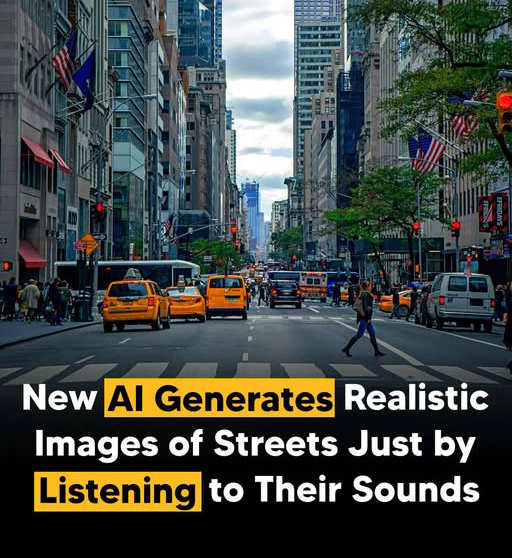AI Creates Realistic Images from Street Sounds with Uncanny Accuracy

Imagine strolling down a crowded street and hearing the commotion all around—cars passing, footfall, and distant people chatting. Imagine now an artificial intelligence able to replicate that precise sound and provide a corresponding visual. Though it seems like something straight out of a science fiction film, it is genuine!
Just that—an artificial intelligence system—the "Soundscape-to- Image Diffusion Model" developed by University of Texas at Austin can accomplish. From mere 10-second audio recordings of street sounds, this innovative method lets artificial intelligence create lifelike visuals.
How Does That Work?
Though it seems complicated, the technique is very interesting. Researchers used 10-second audio and picture snippets culled from YouTube footage of streets all throughout North America, Asia, and Europe to teach the artificial intelligence. Then they fed the artificial intelligence these movies, teaching it to connect particular sounds to particular visual cues. For instance, the sound of traffic might be associated with metropolitan structures, while the sound of birds tweeting could indicate a park with vegetation and trees.
The artificial intelligence developed the ability to recognise important visual cues in line with sound. These can include buildings, trees, the heavens, and even the lighting—that is, whether it is sunny, misty, or nocturnal. It become skilled over time in knowing how particular visual scenes matched street sounds.
Amazing Exam Results
The team tested the AI once it was taught. They created graphics using it from one hundred distinct street audio recordings. Human judges were then asked to correlate the created visuals with their matching sounds. The outcomes were outstanding: eighty percent of the time judges matched the generated image with the right sound.
Not all, though. According to a computer study of the AI-generated images, they quite nearly matched real-world street photos. These photos' brightness even matched the time of day the sounds suggested. For instance, the artificial intelligence generated an image with evening illumination if the audio recording captured nighttime traffic sounds. Conversely, sounds captured during the day revealed brilliant, light street vistas.
Why Does This Matter?
This technique marks a significant advance in the understanding and interpretation of the surroundings by artificial intelligence. It shows that artificial intelligence is improving in visualising what they represent as well as in hearing noises. From improving the accessibility of visual materials for persons with disabilities to supporting environmental monitoring, city planning, and even the building of virtual worlds, this might find many possible uses.
Imagine a time when, depending just on sound, you could instantly picture the surroundings—a crowded metropolitan street or a quiet park. In sectors like virtual reality (VR) or augmented reality (AR), where a mix of auditory and visual components generates immersive experiences, this type of artificial intelligence could also be rather important.
Future Plans:
Although the outcomes are really good, there is still need for development. The AI has only been taught street noises; its capacity to create visuals from more intricate soundscapes—such as inside surroundings or nature sounds—is still developing. Still, this technology has enormous possibilities.
Expanding the spectrum of noises the artificial intelligence can identify and create visuals for will probably come next. To make the AI's visuals even more lifelike, researchers might also focus on improving its ability to recognise more subdued indications in sound, such as background noise's subtleties.
This technique may be applied in the future to create graphics for everything from movies and video games to assist in urban environment research. With sound and artificial intelligence, the opportunities are almost limitless and it is obvious that we are only beginning to explore what is feasible.
For now, though, the concept that an artificial intelligence can capture a 10-second sample of street noise and create a lifelike picture is both incredible and somewhat unbelievable. What comes next? Only time will tell whether artificial intelligence can transform any sound into a totally immersive virtual experience.
--
